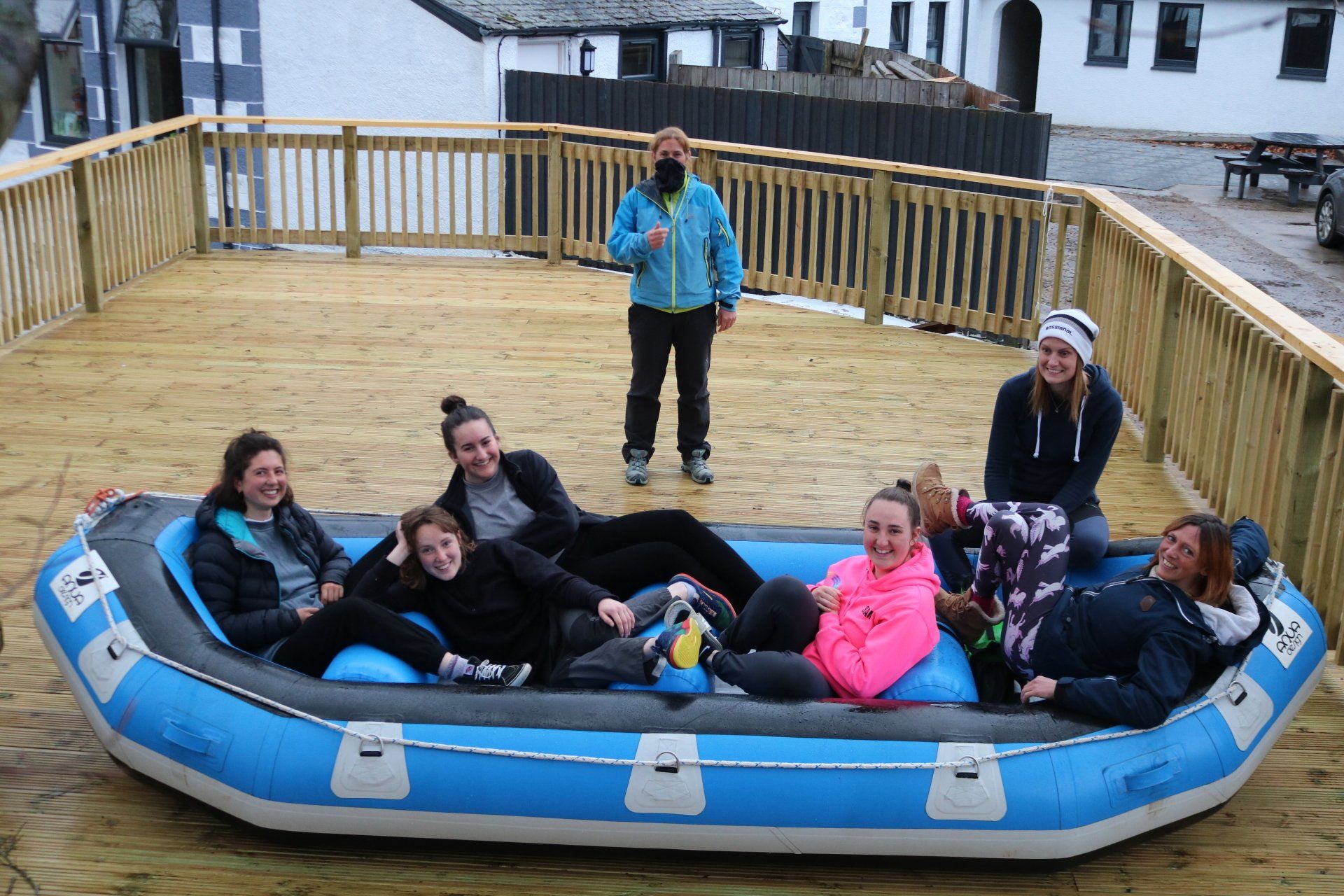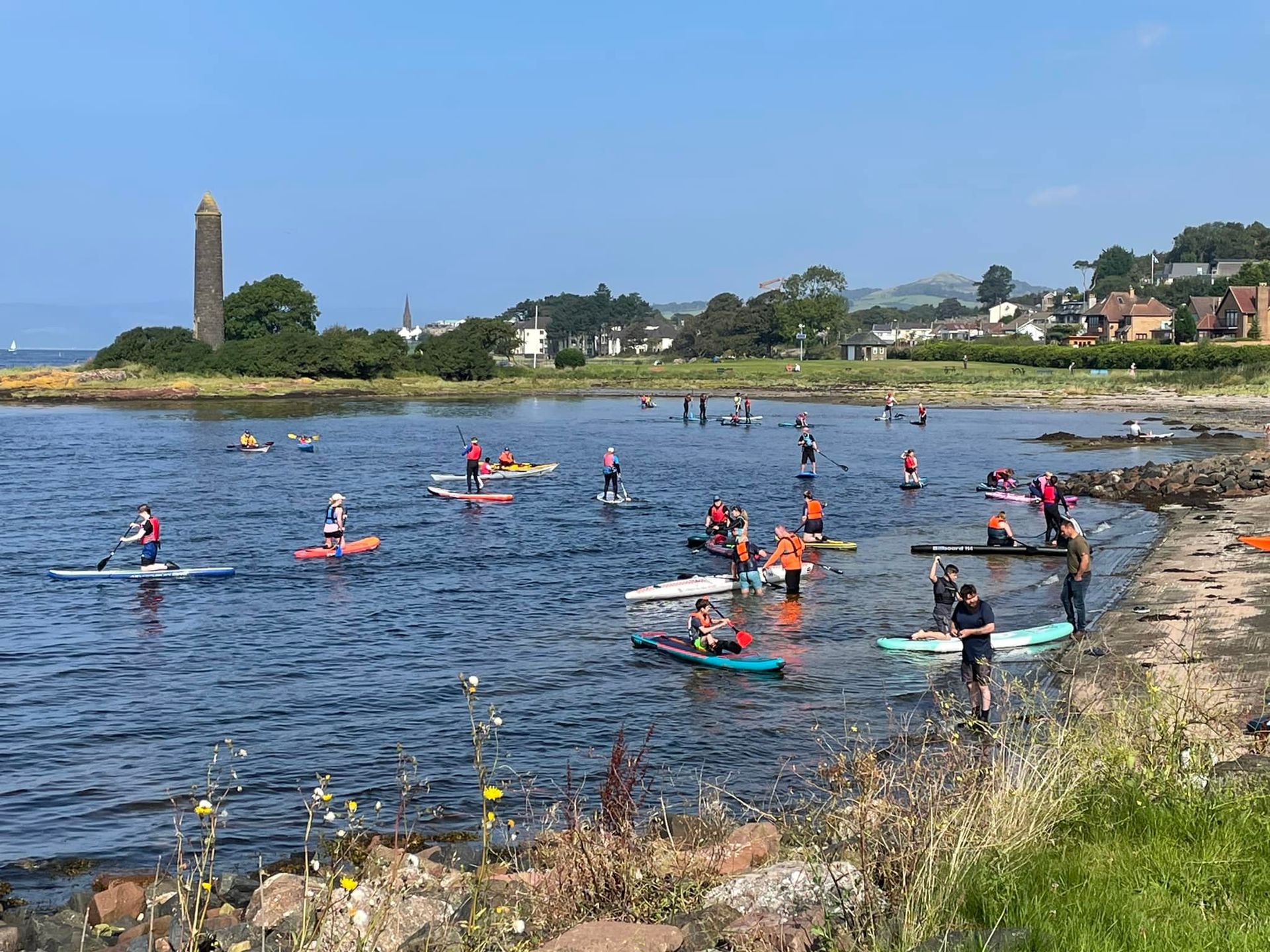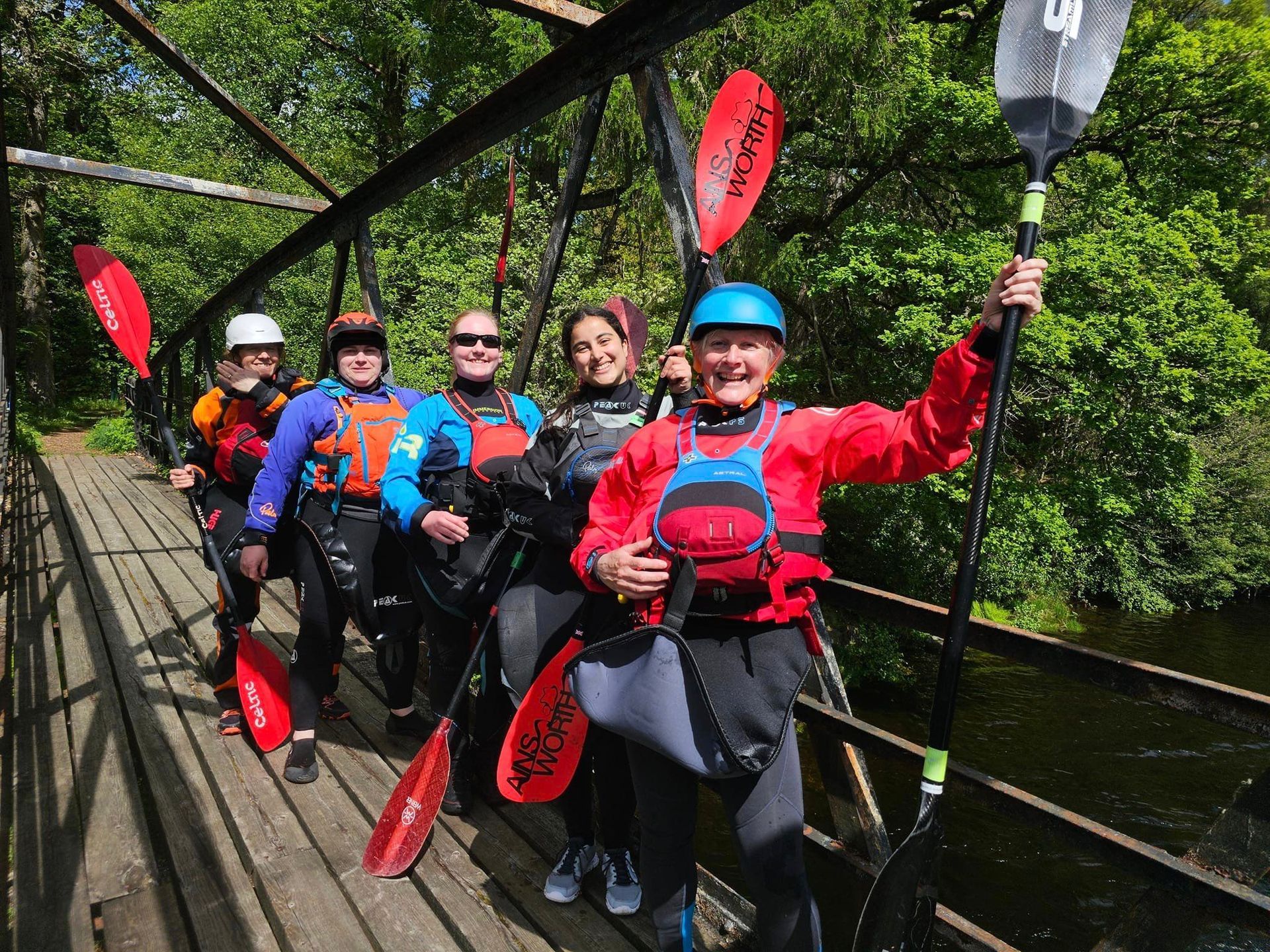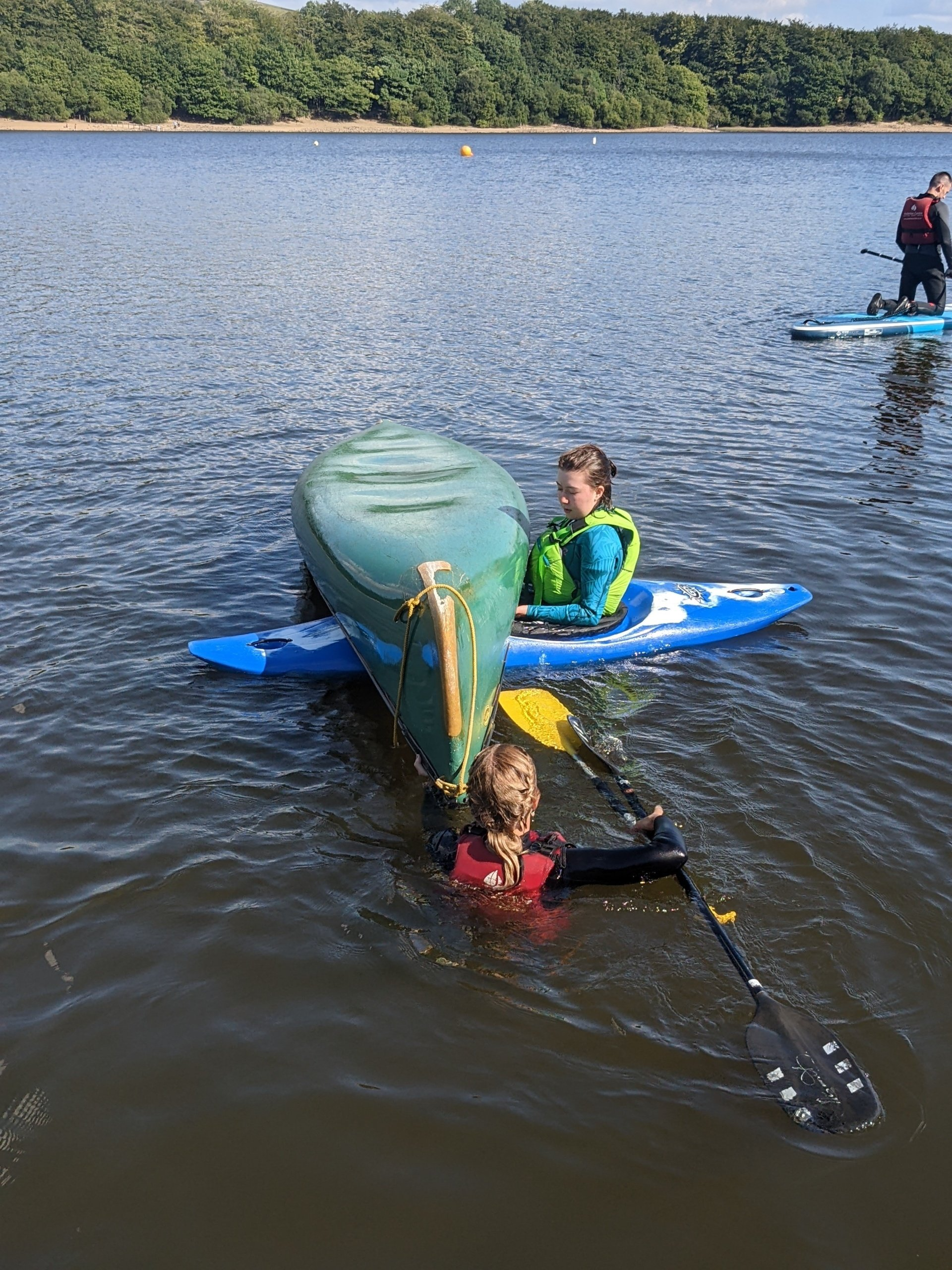British Canoeing Leadership and Raft Guide
British Canoeing Leadership and Raft Guide
We would like to congratulate all 32 of the Active Outdoor team for completing their British Canoeing Grade 2 Raft Guide Leader award in April; the first to achieve this new award anywhere. You might see some of them at the helm this summer as they have all secured employment as outdoor instructors. Hear from Lianne Trendell…."
This March saw the first British Canoeing Leadership and Raft Guide course held on the River Spey for a group of individuals undertaking an Outdoor Instructor Course with Active Outdoor Pursuits. The new British Canoeing award aims to increase the number of qualified raft guides, therefore allowing more opportunities for people to get out on the water.
When I took up the stick for the first time, guiding a raft down the Findhorn River, nervousness and doubt filled my mind. With the power of the water, size of the raft and combined weight of my crew, I felt that with my small stature there was no chance I would have the physical strength to be in control. However, during the following training sessions I was pleased (and relieved) to discover that relying on strength and muscle was not the answer.
We learnt how to read the river, noticing signs of upcoming hazards well in advance, and changes in the strength and direction of flow. We were introduced to techniques that utilise the power of the water to assist in guiding and controlling the raft, and learning to command your crew in the right way at the right time to assist in manoeuvres. Putting these techniques into practice meant that even the most petite of our group could drive this huge inflatable bus safely down the river. With the mastery of these techniques, nerves turned to smiles and doubt turned to laughter. I quickly fell in love with rafting because, to put it simply, white water rafting is really, really fun! There is this great feeling of a shared experience on the raft and a strong sense of team spirit as you float together down
the river and bounce down the rapids.
As well as learning to navigate down the river, a large part of the course is dedicated to white water safety and rescue. From rescuing a victim of foot entrapment, to using pulley systems to recover people from a stranded raft, we covered a variety of different scenarios and methods with which to handle them. The knowledge I gained from this side of the course was invaluable to me as a paddler in general, giving me the confidence to deal with emergencies on the river if they should arise.
The assessment was spread over two days, testing our ability to guide the raft down the river avoiding hazards, breaking into and out of eddies and picking features on the water to have a play on. At the end of each day, we were tested on our ability to rescue swimmers, conscious and ‘unconscious’, and on our rope work and pulley systems. Alongside this, we also had to complete a raft flip- swimming 10 metres to a raft, entering it, flipping it over, getting on top of the upturned raft, flipping it again and then reentering it (all in the space of 2 minutes).
The word ‘assessment’ usually sends cold shivers down the spine, but I can honestly say that this assessment in rafting was FUN! It was a chance to put ourselves into the role of guide for the first time without input from our coaches, choosing our own lines, communicating with the other raft guides and creating an enjoyable experience for our teams. It acted as a window into the future - to see what being a raft guide was going to feel like, and it felt great.
What was the course like from a female perspective?
In a predominantly male industry, it is important to encourage and celebrate the rise of female paddlers, leaders, guides and coaches within paddlesports. The SCA is actively exploring ways to do this, with a calendar of female specific events on offer. Understanding and underpinning the obstacles that may hold women back is crucial to this initiative.
Out of the 32 candidates that took part in this course, 8 of us were female. We took some time to reflect on our motivations, concerns, challenges and achievements during the training and assessment period. Sharing our experiences with you, we hope to inspire more women out on the water, whether it's to paddle recreationally or to become a professional.
My biggest challenge during the assessment was the raft flip drill. My first couple of attempts left me distraught. I struggled to find the arm strength to pull my body weight up and push myself over the side. Females are undoubtedly at a disadvantage here, having more than just a buoyancy aid to get over the tube. But, with much appreciated guidance and support, I remember the surprise and delight when I first managed to wiggle myself into the raft from the water. It was then that I once again realised that this isn’t a drill succeeded only by brute strength, but technique.
The day of our raft flip assessment, my greatest challenge became my greatest achievement. A group of girls stood together, cheering each other on from the side. One by one we all found our technique, and consecutively mastered the raft flip. It was a really special moment for me, and I was equally as excited for my friends as I was for myself. I cannot overstate the difference it made to me having a female presence on the course. To have a group of individuals who shared the same setbacks and struggles created a feeling of solidarity and support. I didn’t carry the burden of feeling like the one and only girl who couldn’t do it first time round, I was part of a group of girls fighting for each other to succeed.
Asking the other girls whether it made a difference to have a female presence on the course, the answer was a definitive yes. So I was intrigued to know if it made a difference to the males too. Here are some of their responses (also a definitive yes).
‘Having female paddlers on the course brought a nice balance to the group. When it’s all guys, things can get a little competitive so having a female energy made us look
out for each other a bit more. ’‘With female paddlers around, there was much less ego and it encouraged good tactics as we weren’t just muscling our way down the river. Having a female presence isn’t just good for other females, it is good for everyone.’ ‘It was nice to have a female energy on the raft- it was inspiring to see the girls tackle
things in different ways, I have a lot of respect for the effort and adaptability they showed.’
Having passed the assessment, I have not only gained an amazing qualification that will provide me with many great opportunities, but a new passion to get obsessed with, and also a newfound strength and confidence in myself. It has also inspired me to get more involved with the female specific events available as going through this experience with other women made me realise the importance of these opportunities and how much positivity I can take from them.
Finding our confidence can be easier when surrounded by women, so that when we get on
water, we are not apprehensive, but just focusing on having a good time. We face different challenges to men, and at times, we may have different approaches. This shouldn’t make us shy away or feel like we have something to prove. The males on the course benefited from our presence as well as we did from each other. I am so happy to be part of the new wave of raft guides, and proud to know that 8 of us represent the growing number of female leaders in the paddlesports industry. I feel excited for my future as a raft guide and urge people who haven’t tried it to give it a go. It is a great activity to enjoy as a family or as a group of friends but also a fantastic way to meet people too.

